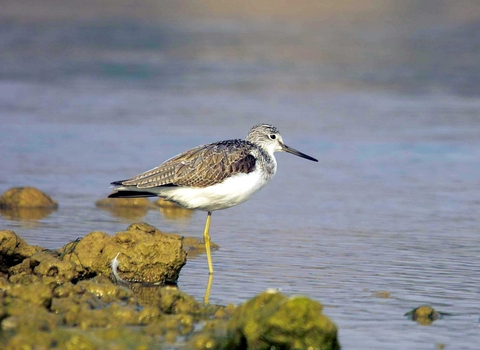
©Derek Moore
Greenshank
The greenshank breeds on the boggy moors and ancient peatlands of Scotland. But it can be spotted elsewhere in the UK as it passes through on migration - look around lakes, marshes and the coast.
Scientific name
Tringa nebulariaWhen to see
January to DecemberSpecies information
Category
Statistics
Length: 30-35cmWingspan: 69cm
Weight: 190g
Average lifespan: 9 years
Classified in the UK as Amber under the Birds of Conservation Concern 5: the Red List for Birds (2021). Protected in the UK under the Wildlife and Countryside Act, 1981.
About
A large, elegant sandpiper, the greenshank feeds in shallow waters, often chasing small invertebrates and fish, which it hunts by sight. During summer, greenshank are found only on moors and bogs in Scotland, but during migration, they can be found across the UK on inland freshwater lakes and marshes, and coastal wetlands.How to identify
Greenshank can be distinguished from similar-sized waders like redshank and godwits by the colour of their legs: grey-green. Adults are olive-grey above and silvery-white below, with dark streaking on the breast. Greenshank have long, slightly upturned, grey bills.Distribution
A passage migrant and scarce winter visitor to shallow wetlands inland and around the coast. Nests on the boggy 'flow country' of northern Scotland.Watch
Greenshank and Common Snipe (https://vimeo.com/444874691)
Greenshank and Common Snipe by John Bridges
